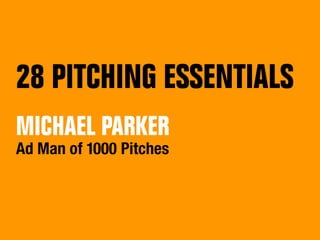28 Pitching Essentials
If you are like many people, even the thought of delivering a speech in front of an audience will get your palms sweating. The fear of public speaking ranks high among the most common phobias, and for good reason: most of us approach the situation with the wrong mindset, which in turn makes us live out our worst fears in a public forum. As Michael Parker notes in IT’S NOT WHAT YOU SAY: How to Sell Your Message When It Matters Most (A TarcherPerigee paperback; on sale January 2016), our fixation on the content of our words – and not the presentation of ourselves – is what brings us down. Once the Vice-Chairman of London’s Saatchi & Saatchi, and one of the world’s most experienced advertising pitch men, having made more than 1,000 pitches in his successful career, Parker has learned first-hand that an effective presentation, a job interview, or even a speech at a wedding hinges on our ability to portray ourselves as passionate, relatable, and collected. But, if we are focused on what we say, and not how we act, we will fail to persuade our audience. Applied in the boardroom, at the pulpit, or even in conversation, these tenets will help you present better in any situation.
Related slideshows

